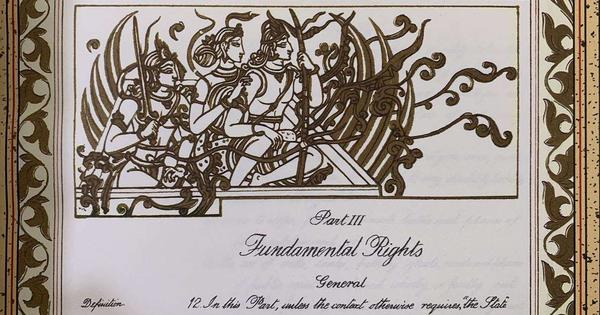
On January 26, 1950, after 165 days of deliberation, 284 members of the Constituent Assembly of India unanimously adopted the Constitution. The original, calligraphed copies of the document were sent to the artist Nandalal Bose and his students at Santiniketan, who decorated each of the 22 parts with elaborate art. When placed in sequence, the art reveals a linear, rather banal, narrative of the Indian subcontinent from the Indus Valley civilisation to the birth of the Republic.
The artworks are titled after the eras they depict: the Mohenjo Daro Period, Vedic Period, Epic Period (covering scenes from Ramayana and Mahabharata), Mahajanapada and Nanda Period (covering Mahavira and Buddha), Mauryan period, Gupta Period, Medieval Period with scenes from Orissa and the South, Muslim Period (portraying Akbar, Shivaji and Guru Gobind Singh), British Period (portraying Jhansi Lakshmi Bai and Tipu Sultan) and the Indian Freedom Movement (including images of MK Gandhi and Subhas…
